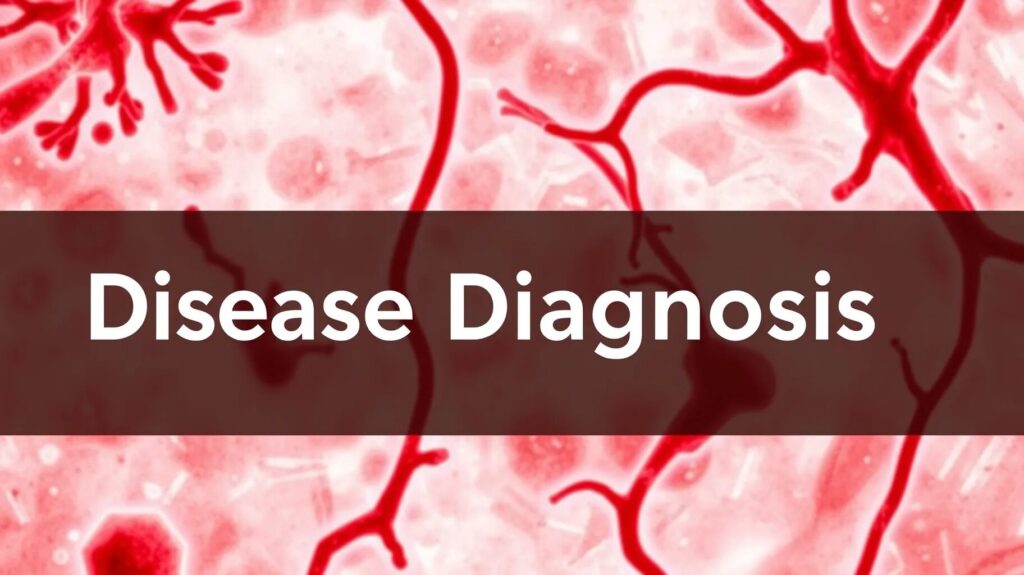
Since its groundbreaking success with protein folding, AlphaFold has revolutionized the field of structural biology. However, one question remains on the minds of many scientists: could AlphaFold 3 go beyond protein structures and model RNA, DNA, and complex cellular systems?
With its AI-driven predictions and vast potential, this next frontier could reshape our understanding of molecular biology in unprecedented ways.
Let’s explore the possibilities.
AlphaFold’s Breakthrough: A Brief Recap
AlphaFold, developed by DeepMind, made headlines by solving the protein folding problem—one of biology’s most daunting challenges. By predicting the 3D structures of proteins from their amino acid sequences with near-experimental accuracy, AlphaFold has had an enormous impact on drug discovery, medical research, and more.
But protein folding is just one piece of the larger molecular puzzle. DNA and RNA, as well as protein-protein interactions and cellular environments, play equally critical roles in biology.
So, could AlphaFold 3 extend this revolution?
Could AlphaFold 3 Predict RNA Structures?

RNA, though chemically similar to DNA, has a more complex secondary and tertiary structure. Its ability to fold into functional shapes—much like proteins—makes it vital for cell function, influencing everything from gene regulation to catalysis.
The challenge with RNA lies in its dynamic nature. Unlike proteins, RNA frequently shifts between multiple conformations, and the interactions with proteins or small molecules complicate predictions. AlphaFold 2, though powerful, was not designed for RNA folding. However, an AlphaFold 3 could be trained on RNA data, incorporating advances in machine learning to handle the flexibility and multi-state nature of RNA molecules.
If this happens, it could pave the way for breakthroughs in:
- RNA therapeutics like mRNA vaccines
- Gene regulation studies (understanding how RNA controls genes)
- Decoding viral RNA structures, essential for fighting diseases like COVID-19
What’s Already in Place?
Some tools, like Rosetta and RiboVision, already work on RNA folding, but they often require extensive manual input and don’t reach AlphaFold’s level of automation or accuracy. AlphaFold 3 could fill this gap, bringing a faster, more precise way of modeling RNA structures.
Modeling DNA: The Blueprint of Life
DNA is much more than a static genetic code. It bends, loops, and interacts with numerous proteins within cells. These DNA-protein complexes, like chromatin or nucleosomes, are critical for regulating gene expression and maintaining genomic integrity.
AlphaFold 3 could be developed to predict how DNA folds and interacts with other molecules. This would be particularly useful in understanding processes like:
- Epigenetic modifications (how chemical changes to DNA affect gene activity)
- Chromosome organization in the nucleus
- Understanding diseases tied to genomic instability, like cancer
While there are currently simulation tools to study DNA dynamics (e.g., Molecular Dynamics simulations), they often require significant computational resources. AlphaFold’s approach, if expanded, could provide quicker and more accessible insights into DNA behavior in a way that transforms genetic research.
Cellular Systems: The Ultimate Frontier?

While predicting single-protein structures is impressive, real-world biology occurs in highly complex cellular environments. Proteins interact with other proteins, nucleic acids, lipids, and small molecules, often forming massive complexes. Predicting these protein-protein interactions (PPIs) is a growing area of interest.
AlphaFold 3 could potentially model these multimolecular complexes, allowing for predictions of entire pathways or cellular systems. For example:
- Signal transduction pathways, where proteins relay information within cells
- Metabolic networks, which involve multiple enzymes and substrates
- Viral-host interactions, key for antiviral drug design
AlphaFold 2 already made strides toward predicting protein complexes, but expanding this to larger macromolecular assemblies could revolutionize our understanding of cellular systems as a whole.
The Challenges Ahead
While the potential is exciting, a few challenges stand in the way of AlphaFold 3 extending to RNA, DNA, and complex systems:
- Data Scarcity: Unlike protein structures, which have been studied extensively, there is less available data for RNA, DNA, and full cellular complexes. Machine learning models thrive on vast datasets, and the lack of detailed structural information in these areas could slow development.
- Computational Complexity: Modeling large systems or highly flexible molecules like RNA would require vast computational power. Predicting interactions across entire cellular networks would be a significant leap from the current capabilities.
- Dynamic Nature: Many biological molecules, especially RNA and large protein complexes, constantly change shape. Predicting not just a static structure but a range of dynamic states is much harder.
What the Future Could Hold
Despite the challenges, the leap from protein folding to RNA, DNA, and beyond isn’t out of reach. If AlphaFold 3 successfully integrates RNA and DNA predictions or tackles cellular systems, it could reshape molecular biology. From developing personalized medicines to combating viral infections, the applications could be limitless.
Further Reading:
- Explore the science behind AlphaFold’s protein predictions from Nature.
- Learn about the challenges and opportunities of RNA structural prediction.
FAQs
What challenges are there in predicting DNA structures with AlphaFold 3?
DNA is more than just a static molecule—it bends, loops, and interacts with proteins. Predicting how DNA behaves in complex systems like chromatin or nucleosomes could be one of AlphaFold 3’s major challenges. Data scarcity and the need for dynamic modeling are key obstacles.
Can AlphaFold 3 model entire cellular systems?
In theory, yes. AlphaFold 3 could evolve to predict protein-protein interactions (PPIs) and model multimolecular complexes within cells. While AlphaFold 2 has made strides in protein complexes, modeling large systems like signal transduction pathways or metabolic networks would be a significant step forward.
What are the limitations of extending AlphaFold to RNA, DNA, and cellular systems?
The main limitations include data scarcity, as fewer detailed structures exist for RNA, DNA, and large cellular complexes compared to proteins. Additionally, the dynamic nature of these molecules and the computational complexity involved in modeling entire systems make this a challenging goal.
Could AlphaFold 3 help in drug discovery?
Absolutely. By predicting RNA, DNA, and protein interactions more accurately, AlphaFold 3 could vastly accelerate drug discovery processes. It could aid in the development of RNA-based therapies and help in designing molecules that target specific proteins or cellular pathways involved in diseases like cancer or viral infections.
Will AlphaFold 3 handle the dynamic nature of RNA and protein interactions?
Handling the dynamic behavior of molecules like RNA and proteins is a major challenge. These molecules often exist in multiple conformational states, shifting depending on their interactions and the cellular environment. AlphaFold 3 would need to account for this flexibility, potentially through advancements in machine learning that allow for the prediction of multiple dynamic states, not just static structures.
How does AlphaFold 3 differ from other RNA and DNA prediction tools?
Current RNA and DNA prediction tools, such as Rosetta or Molecular Dynamics simulations, often require substantial manual input and computational resources. AlphaFold 3, if developed to handle nucleic acids, could offer a faster, more automated approach. It could outperform traditional methods in both speed and accuracy by leveraging the powerful machine learning techniques that made AlphaFold so successful with proteins.
Could AlphaFold 3 help in understanding genetic diseases?
Yes, by modeling DNA-protein interactions and predicting how mutations affect these interactions, AlphaFold 3 could provide insights into the mechanisms behind genetic diseases. For instance, it could predict how mutations in DNA or RNA impact the formation of cellular complexes, shedding light on disorders like cancer, cystic fibrosis, or neurodegenerative diseases.
How far are we from AlphaFold 3 predicting cellular systems?
Modeling entire cellular systems is an ambitious goal, and it may take several iterations of AlphaFold (or other AI models) to fully achieve it. While AlphaFold 2 has already made progress in predicting protein complexes, modeling entire cellular environments—including lipids, nucleic acids, and various proteins—would require significant advances in data integration and computational power.
What industries could benefit from AlphaFold 3’s advancements?
Many industries stand to benefit from the advancements of AlphaFold 3, including:
- Pharmaceuticals: For drug discovery and development, especially targeting RNA and protein-protein interactions.
- Genomics: Understanding how DNA folding and chromatin organization affect gene regulation.
- Biotechnology: Designing gene therapies and RNA-based technologies.
- Healthcare: Developing more personalized medicine approaches by understanding individual genetic variations and their impacts on cellular systems.
Could AlphaFold 3 be used to model RNA-protein interactions?
Yes, modeling RNA-protein interactions could be one of the exciting new capabilities of AlphaFold 3. These interactions are critical for many biological processes, including gene expression regulation and viral replication. By accurately predicting these complex interactions, AlphaFold 3 could advance our understanding of how RNA-binding proteins function, which is crucial for RNA-based drug discovery and antiviral treatments.
How would AlphaFold 3 help with vaccine development?
AlphaFold 3 could accelerate vaccine development by predicting the structures of viral RNA and how it interacts with proteins in the body. This would enable scientists to design more effective vaccines by targeting specific viral components. For example, with mRNA vaccines like those for COVID-19, AlphaFold 3’s ability to model RNA could improve the design and efficiency of these vaccines.
Will AlphaFold 3 require more data than previous versions?
Yes, expanding from proteins to RNA, DNA, and cellular systems will require a larger and more diverse dataset. For AlphaFold 3 to accurately predict RNA and DNA structures or model cellular environments, it will need vast amounts of experimental data from sources like cryo-electron microscopy, nucleic acid structure databases, and large-scale genetic studies. Collecting and curating this data is a key hurdle.
Can AlphaFold 3 improve our understanding of epigenetics?
Definitely. Epigenetic mechanisms like DNA methylation and histone modification affect how tightly DNA is packaged and how genes are expressed. AlphaFold 3 could model how these chemical modifications influence the three-dimensional structure of DNA and its interactions with proteins. This would provide insights into gene regulation, aging, and diseases influenced by epigenetic changes, such as cancer and neurological disorders.
What role could AlphaFold 3 play in synthetic biology?
In synthetic biology, designing new biological parts, systems, or organisms often requires a deep understanding of RNA, DNA, and protein structures. AlphaFold 3 could help by predicting how these molecules behave and interact, enabling scientists to design more efficient synthetic organisms or molecular machines. This could lead to advancements in biofuels, environmental sustainability, and custom therapies tailored to specific diseases.
Could AlphaFold 3 help combat antibiotic resistance?
Yes, AlphaFold 3 could potentially model bacterial protein interactions and antibiotic-binding sites, which would be crucial for developing new antibiotics. By predicting how bacterial enzymes mutate to resist current drugs, AlphaFold 3 could aid in designing next-generation antibiotics that overcome antibiotic resistance, a major global health threat.





